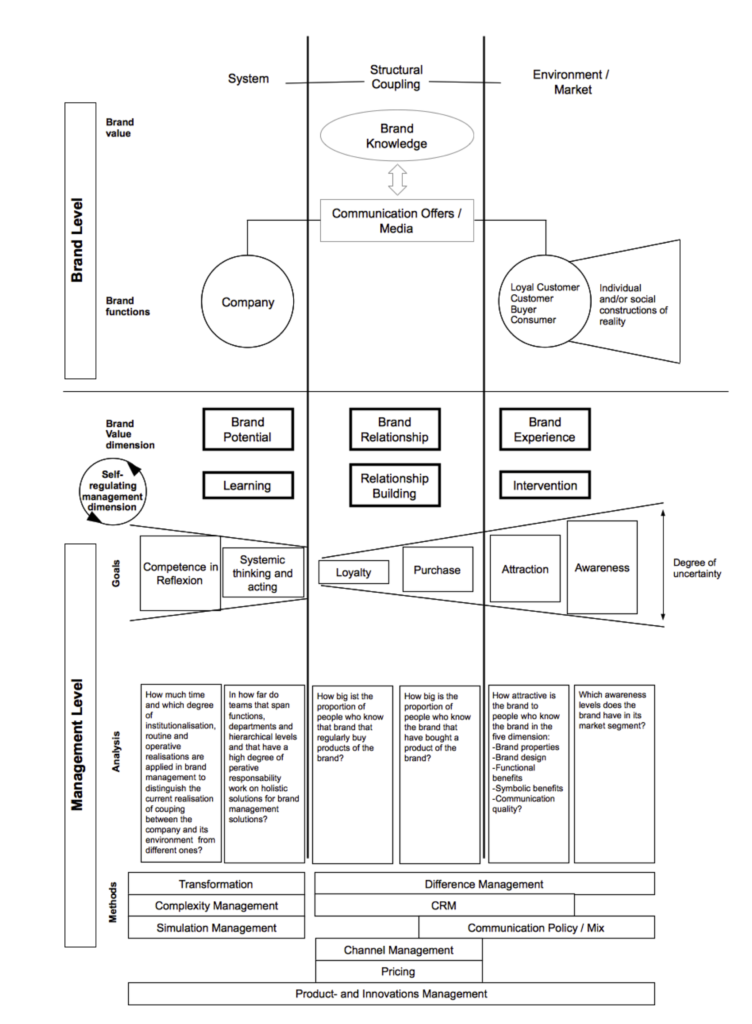This post is part of my paper ‘The Evolving Role of Creativity in Brand Management’. You can see the table of contents here. The previous part was about the (enduring?) challenges facing brand management.
As Grots & Pratsche (2009, p.18) point out, many of the challenges in today’s economy are too complex to be mastered by a single genious, a single department or a single company. Organisations always had to process and transform the complexity of their environment to survive and they continuously have to reconfigure and transform their coping strategies to keep up with what is happening around them.
To implement that thought in brand management theory and to provide a higher level of abstraction, Tropp (2004, p.170) integrates the aforementioned conceptualizations of brands, environmental challenges and management into a systems theory based model of brand management that is seen in Figure 3.

In this model, the management of a brand itself is included and three major management dimensions are identified (Tropp 2004, p.168):
- Brand potential, which asks if brand management has the ability and potential to learn and use systemic thinking and acting,
- Brand relationship, which measures whether a brand builds and nurtures relationships between customers and a company.
- Brand experience, which asks whether a brand has the preconditions to intervene in
the cognitive system of consumers.
In addition, three ‘philosophical’ pillars are suggested for brand management (Tropp 2004, p.176f). These pillars are reflexivity, complexity and holistic thinking.
Reflexivity means that brand management is – first of all – self management, in line with management and organisational theory that sees organisations as a communication system. In that sense, brand management is to a high degree self-organisation and self-referential.
Complexity means that the function of brand management in organisations is to vary and transform environmental complexity. To make this happen, brand management has to apply measures to increase complexity (variety) and to reduce complexity (redundancy). Variety is used to come up with new options, futures and possibilities – to produce ‘unpredictable outputs’, redundancy is used to reproduce the already known.
Holistic thinking aims at understanding the relationships, patterns and properties of and within systems instead of focusing linearity and analytical reduction and consequently argues for a circular view of causes and effects and for a more probabilistic planning.
—
The next part pulls together the conclusions from the current brand management paradigms, the challenges facing brand management and a systems theory view of brand management.
—
Grots, A. & Pratschke, M., 2009. Design Thinking – Kreativität als Methode. Marketing Review St. Gallen, 26(2), pp.18–23.
Tropp, J., 2004. Markenmanagement: Der Brand Management Navigator. Markenführung im Kommunikationszeitalter, VS Verlag.